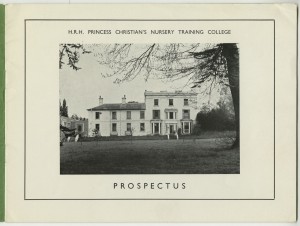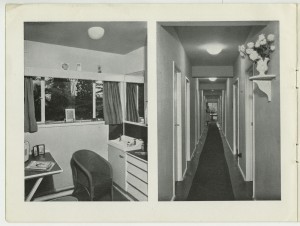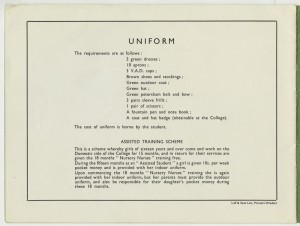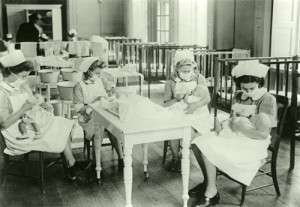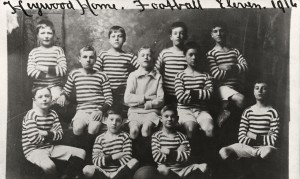In the mid-20th Century The Children’s Society had a number of colleges and hostels where students could train to become nursery nurses. The records of these places give an insight into the skills that nursery nurses were required to have.
One of the training colleges was HRH Princess Christian’s Nursery Training College based in Windsor. A prospectus for the college from around the 1950s tells us what student nurses were expected to learn:
- Care and handling of children from birth to 5 years
- Management of premature infants
- Artificial feeding
- Needlework and laundry
- Knitting
- Hygiene
- Children’s ailments and infectious diseases
- Cookery
- The physical and mental development of the child
Once students had completed the training they were allowed to sit exams for a range of qualifications:
- The National Nursery Examination Board Certificate
- The Certificate of the Royal Sanitary Institute Examination for Nursery Nurses
- The college’s own certificate
Further pages of the prospectus give us a glimpse of what it would have been like to study at the college. The image below shows photographs of a student bedroom and the corridor leading to it.
The final page contains details of the uniform that students were expected to wear. (As with all photographs on this blog, please click the image for a larger version.)
Delving further into the records of this college, and the others like it, may unearth more information about just how nursery nurses were trained and what they were taught, particularly with regards to children’s medical care at the time.
If you want to find out more, take a look at this page from the 1952 Handbook for Workers, which explains what the aims of The Children’s Society’s nurseries were.

